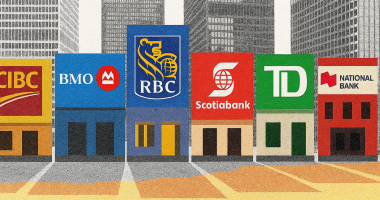- Adjustable rate mortgages are where most of the mortgage owners or are feeling the most pain with payments nearly doubling with the previous rate increases
- On December 15th, the insured mortgage cap will increase from $1 million to $1.5 million, meaning homebuyers will need a smaller down payment for more expensive properties
- Rate cuts do not affect ‘fixed rate’ mortages
- Kimberly Coutts: “Between now and next year with 2. 2 million mortgages that need to be renewed.”
As interest rates continue to fluctuate, many Canadians are asking how recent rate adjustments will impact their mortgages and the housing market at large. With the Bank of Canada prime rate coming down, homeowners and potential buyers are looking for answers, particularly about the different types of mortgages and how upcoming government changes will affect their financial decisions.
In the above video, Lower Mainland mortgage broker Kimberly Coutts, aka the “Mortgage Maven,” joins The Market Online for an in-depth look at how the Bank of Canada’s latest half percent rate cut relates to the average homeowner.
Impact of Prime Rate Cuts on Mortgage Products
Right off the top, Coutts starts by saying that “fixed rates are not changed whatsoever.” The most significant question many mortgage holders have is whether the recent rate reductions will make a tangible difference. According to Coutts, these cuts primarily affect products tied to the Bank of Canada prime rate, such as unsecured lines of credit, home equity lines of credit (HELOCs), and variable-rate mortgages.
Two types of variable-rate mortgages
There are two main types of variable-rate mortgages: adjustable-rate mortgages and true variable-rate mortgages. Adjustable-rate mortgages, fluctuate in sync with the Bank of Canada’s prime rate. ave caused the most financial strain for homeowners in recent years.
Coutts notes that the adjustable rate mortgages are where most of the mortgage owners or are feeling the most pain. :”Some people had seen their monthly mortgage payments double over the last couple of years,”
However, with the recent reduction in rates, homeowners with adjustable-rate mortgages can expect some relief.
Coutts further explains, “For every quarter percent discount on a $100,000 mortgage, you’re putting $15 more in your pocket.” Although this might seem small, the average mortgage size in Canada is about $500,000, meaning homeowners could see an extra $375 in savings per month. This reduction allows homeowners to direct more funds towards other financial goals, such as savings or investments.
For those with true variable-rate mortgages, the scenario is different. With these mortgages, the monthly payment remains static, but as interest rates decrease, a larger portion of the payment goes towards the principal. This accelerates the payoff process, as the amortization period effectively shortens.
The Housing Market: More Affordable for Buyers?
As rates decrease, the housing market might see an uptick, especially in terms of buyer confidence. Lower interest rates tend to create a shift in potential buyers, who may feel more confident about their purchasing power. Coutts says that, “Every time these reductions happen, there is a psychological shift. Buyers think, “Oh, I can now qualify for a little bit more.’”
For example, the income required to qualify for a $500,000 insured mortgage has decreased from $120,000 to around $108,000. This reduction in qualification requirements is prompting more people to seek pre-approval for mortgages, which could fuel a resurgence in market activity. “It’s a bit of a buyer’s market now,” the expert added, “with more listings available, so now might be a good time to buy before the spring market rush.”
Upcoming Changes to the Insured Mortgage Space
Starting December 15th, the Canadian government will implement significant changes to the insured mortgage space, which could further stimulate the housing market. The insured mortgage cap will increase from $1 million to $1.5 million, meaning homebuyers will need a smaller down payment for more expensive properties. Coutts points out that ,“Before December 15th, you would have needed $300,000 as a down payment for a property worth $1.5 million. After the change, you’ll only need $125,000.”
Additionally, homeowners will be able to extend their amortization period from 25 to 30 years, which will help reduce monthly payments, making homeownership more affordable for some buyers. These changes are particularly beneficial for regions like Greater Toronto Area (GTA) and Lower Mainland Vancouver, where home prices are traditionally higher.
Key Takeaways for Homebuyers and Homeowners
- Mortgage owners with adjustable rates will benefit from recent rate cuts, seeing potential savings on monthly payments, especially if their mortgage size is larger.
- True variable-rate mortgages allow for more of each payment to go toward the principal, reducing the total length of the loan.
- The psychological impact of rate cuts can encourage potential buyers to jump into the market, especially as qualification requirements ease.
- Government changes to insured mortgages, including an increased cap and reduced down payments, could make higher-priced homes more accessible to buyers.
- Amortization periods for insured mortgages are set to increase from 25 to 30 years, which will ease monthly cash flow for buyers.
As we approach the New Year, these changes in both the mortgage landscape and the housing market present an opportunity for buyers to act before the traditional spring rush. She adds that “We’re seeing a lot of renewals between now and next year with 2. 2 million mortgages that need to be renewed.”
Coutts concludes that these changes help homeowners to not have to liquidate their investments to put a down payment towards a home. market
Be sure to stay up to date on all the latest stock market news at Stockhouse.com.
Also check out other interviews with Kimberly Coutts, Need some extra cash? Here’s the information on reverse mortgages and Lower inflation primes Canada’s real estate market for a shift.
Join the discussion: Find out what everybody’s saying about public companies and more by checking out Stockhouse’s stock forums and message boards.
The material provided in this article is for information only and should not be treated as investment advice. For full disclaimer information, please click here.




